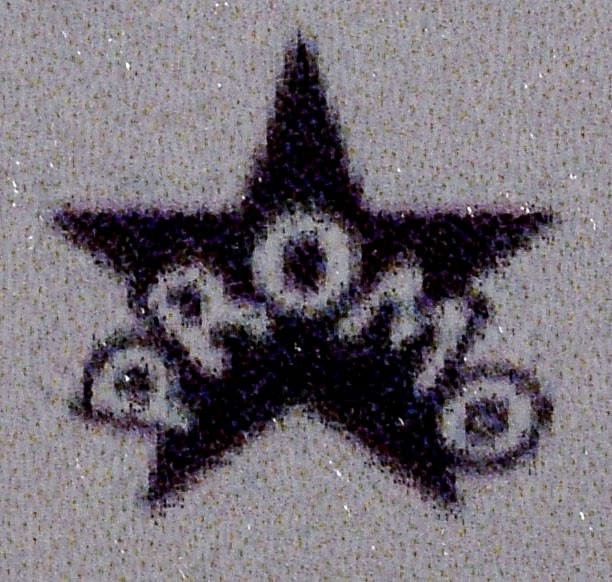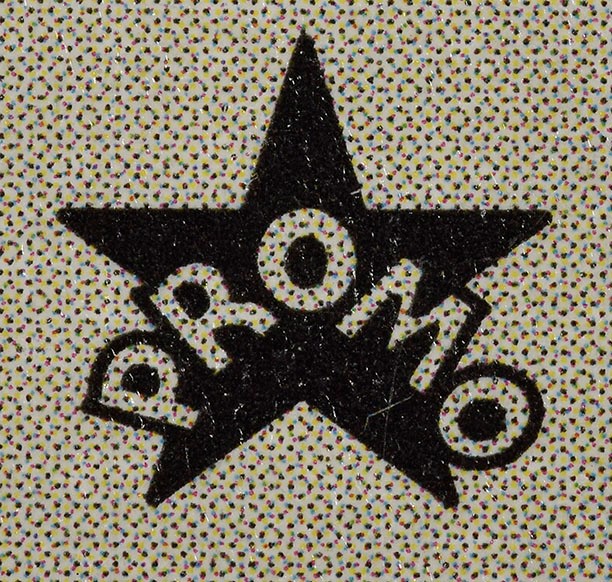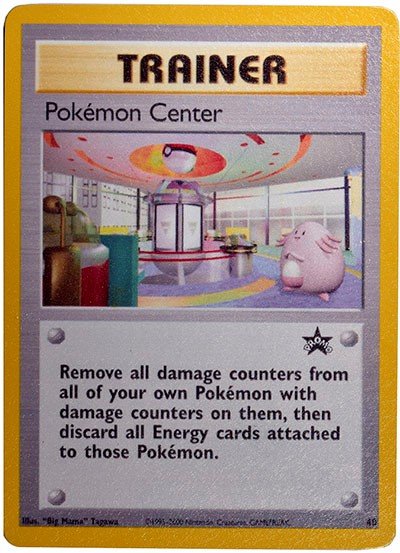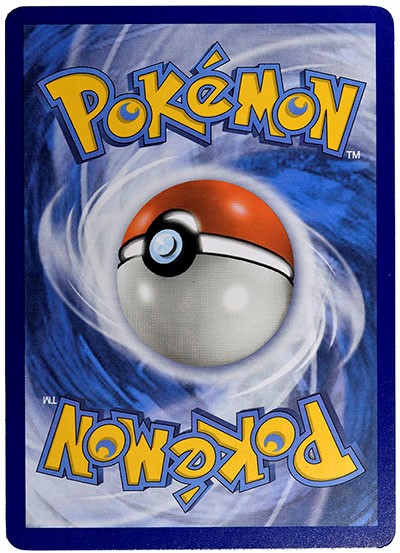CGC Trading Cards Catches Counterfeit Pokémon Center and Lucky Stadium Cards
Posted on 10/29/2020
CGC Trading Cards graders recently encountered a pair of counterfeit Pokémon Center and Lucky Stadium cards submitted for certification. Forgers frequently target these desirable cards, so here we point out some things to look for to avoid falling victim to a spurious example.
On November 16, 2001, the Pokémon Center New York officially opened its doors. The event was highly anticipated, as this was only the third physical Pokémon store in the world, with the other two located in Japan.
To celebrate the grand opening, two of the rarest Wizards of the Coast (WotC) era Pokémon promotions were given out: #40 Pokémon Center and #41 Lucky Stadium. According to pokemoncenternewyork.com, a visitor had to bring a special postcard invitation like the ones below to receive one of the special cards.
These two promo cards had a distribution that was exceptionally smaller than any other WotC promo. While other promos were given away by the millions at Pokémon Leagues, movie theaters or with the purchase of popular video games, the only way to get Pokémon Center or Lucky Stadium was to physically go to the store in Rockefeller Center.
Here’s a great example of the rarity of these two cards: WotC produced 53 different promo cards altogether, and near complete sets missing only the Pokémon Center New York cards sell for $400 to $500. Pokémon Center and Lucky Stadium sell for $300 to $400 each!
Due to the rarity and value of these cards, it is not surprising that they are often the subject of counterfeiting. The interesting forgeries that caught the attention of CGC Trading Cards graders are pictured below.
From arm’s length, the fronts of the cards look decent, though quite fuzzy. Under any magnification, however, their appearance decreases drastically. This is clearly evident in the close-up photos of the Black Star. It is quite obvious that the counterfeiters simply took a scan of a genuine card and poorly reproduced it using a consumer printer.
 |
 |
| A close-up of the Black Promo Star on the counterfeit Lucky Stadium (left) and a genuine Computer Error Promo (right) Click images to enlarge. |
|
The poor print quality is even more apparent as you look closer at a genuine card. All Pokémon cards are printed with a CMYK offset printing technique that uses four different colors to produce an image. These primary colors — cyan, magenta, yellow and black — are visible upon close inspection of a card. Here, the four different colored dots are easily seen in the first “O” in “PROMO” on a genuine card.
While the fronts of the counterfeit cards reveal their shortcomings upon a closer inspection, their backs look great. How could that be? A look at the edge of one of the cards answers that question.
As you can see from this edge photo, the reason that the backs of these cards look real is because they are. To create the counterfeit cards, the forger glued fake fronts to modern cards worth a few cents, making the counterfeit cards almost twice as thick as a genuine card!
When you look at the edge photo featuring one of the counterfeit cards and a genuine card, you can see, from right to left: blue back, white paper, black core, another white layer and then the yellow edge of the front of the card. However, the fake has an entire additional layer of white and then an extra yellow front as well.
With the recent rise in price of Pokémon cards, it is very important to closely inspect every card that you purchase, or better yet, buy certified cards. Every card in a CGC Trading Cards holder is guaranteed to be genuine.
Stay Informed
Want news like this delivered to your inbox once a month? Subscribe to the free CGC eNewsletter today!






20201023165918045.JPG)